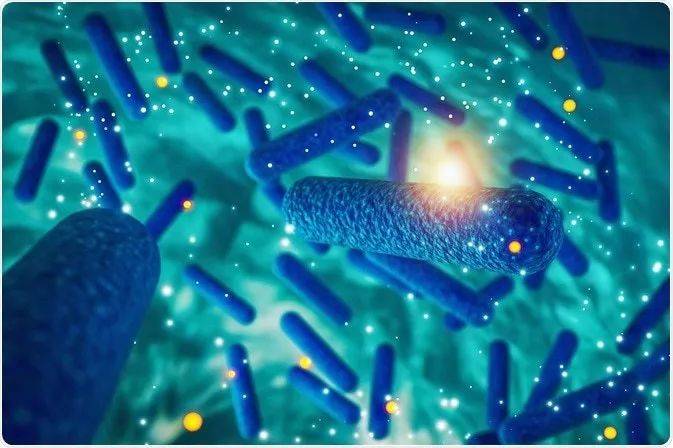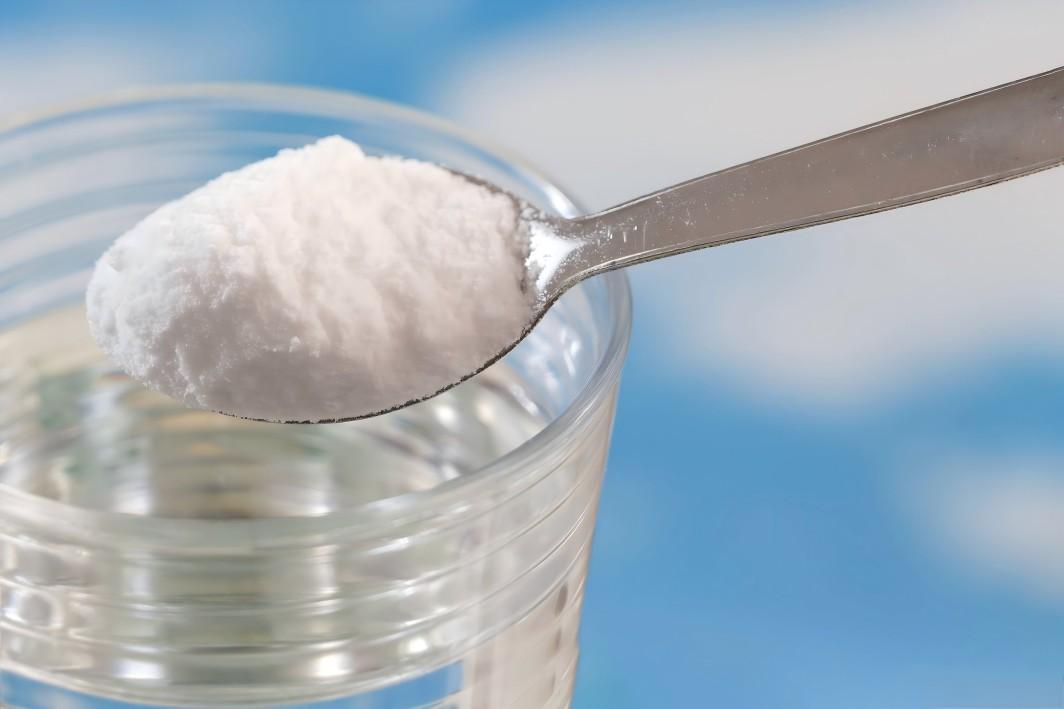What Is the Benefit of Fructooligosaccharides?
Microecological health products, headed by bifidobacteria, lactobacilli and various functional oligosaccharides, are a new generation of health foods developed on the basis of medicine and nutrition. Oligosaccharides are not digested or absorbed by the body and enter the large intestine directly, where they are preferentially used by bifidobacteria. They are an effective proliferation factor for bifidobacteria and also have a variety of biological effects. This is why they are called functional oligosaccharides, including isomaltooligosaccharides, fructo-oligosaccharides, and galacto-oligosaccharides.
Among them, fructo-oligosaccharide (FOS), also known as sucrose oligosaccharide, has the molecular formula GFn (where n is 2 to 5 and G is glucose and F is fructose). It is a general term for a mixture of sucrose trisaccharides (GF2), sucrose tetrasaccharides (GF3) and sucrose pentasaccharide (GF4) etc. are collectively referred to as the general term for mixtures. Fructooligosaccharides are a natural active ingredient and an excellent water-soluble dietary fiber that is widely found in natural plants such as bananas, shallots, garlic, tomatoes, asparagus, Jerusalem artichokes and cereals.
Currently, fructooligosaccharides are prepared by the sucrose enzyme method and the chicory extraction method [1]. Fructooligosaccharides have been widely used in health foods, foods, feeds, and other fields [2]. Fructooligosaccharides can prevent and treat chronic diseases and have a positive effect on human health, and have become a research hotspot. Fructooligosaccharides have a significant effect in regulating the intestinal flora of the human body, promoting the growth of beneficial bacteria, promoting the absorption of minerals, enhancing the body's immune system, lowering cholesterol and blood sugar levels, regulating intestinal function to promote gastrointestinal motility, and inhibiting the occurrence of colon cancer [3]. This article reviews the physiological functions of fructooligosaccharides, with a view to providing a theoretical basis for the development of more applications.
1 Physiological functions of fructooligosaccharides
1.1 Regulating intestinal flora and improving intestinal microecology
FOS is a bifidobacterial proliferation factor that can increase the number of bifidobacteria, regulate the number of intestinal flora, and improve and promote intestinal health. The human body (including infants) contains a large number and variety of microorganisms, including more than 400 species, including major flora (such as bifidobacteria, lactobacilli, etc.) and minor flora (such as coliforms, streptococci, etc.). Under normal circumstances, the intestinal flora is in a state of balance and is harmless to the human body. It forms an indispensable and powerful ecological system for the human body, and plays a huge role in various aspects such as human nutrient metabolism, immune regulation, cardiovascular disease, obesity, liver disease, and even cancer and neurodegenerative diseases, affecting human development and health. Human intestinal flora has become a new research area for the treatment of metabolic diseases [4-5].
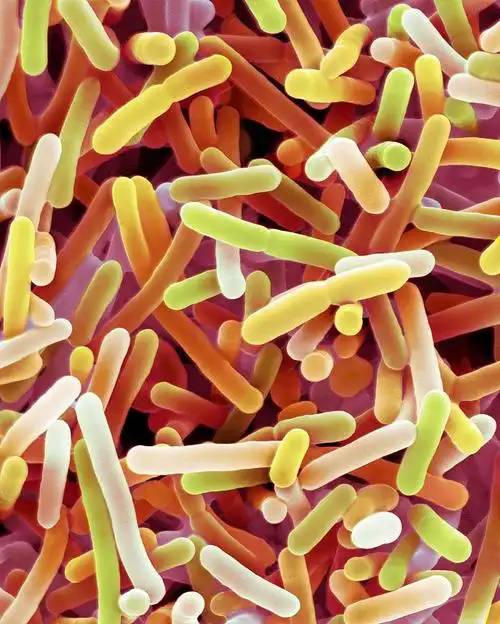
Maintaining the balance of the intestinal flora and increasing the number of beneficial bacteria is crucial to maintaining and improving human health. Once the balance of the intestinal flora is disrupted, it can trigger a variety of diseases [6-8]. FOS, as a bifidobacterial proliferation factor, can promote its growth. Bifidobacteria are considered to be one of the first to enter the human intestinal flora. They play an important role in regulating colon regularity, improving intestinal inflammation, preventing and treating colon cancer, reducing the incidence of small intestinal necrosis, prevent gastrointestinal infections, and improve intestinal metabolic capacity. Some studies have shown [10] that oral administration of Bifidobacterium longum can effectively inhibit the symptoms of viral infection in a mouse model of diarrhea induced by rotavirus; and that the incidence of diarrhea in infants fed a probiotic supplement formula is significantly lower. Research has shown [11] that FOS can relieve the symptoms of enteritis, promote the growth of bifidobacteria, and maintain the stability of the intestinal microenvironment.
1. 2 Regulating the body's immune system
The intestinal mucosa plays an important role in the body's immune system, and the intestinal flora colonising the mucosa is an important substance for maintaining intestinal immunity. The intestine has the largest surface area and is the main battlefield in the fight against pathogen invasion. Therefore, the intestine has become the body's largest immune organ, containing 60% to 70% of the body's immune cells and 60% of the body's total immunoglobulin IgA. It is the first barrier of the body's immune system. The intestinal flora (including living and dead cells) and their metabolites can stimulate the intestinal immune system to activate immune cells, enhance natural killer (NK) cell activity, increase antibody levels, regulate the phagocytic function of lymphocytes, and increase interferon secretion to boost the body's immune system.
Fructooligosaccharides have two main effects on regulating the intestinal microecological balance by promoting the proliferation of bifidobacteria. On the one hand, they can induce the immune activity of the intestinal mucosal lymphatic system, activate humoral immunity and cellular immunity, increase the number of antibodies and the activity of natural killer cells (NK), and regulate the body's immune function locally or as a whole. On the other hand, they can affect the number and distribution of bacteria on the intestinal mucosa and regulate the immune response. Some articles have shown [12] that adding oligofructose to carp feed can enhance the activity of the fish's white blood cells. Hosono et al. [13] proved that oligofructose can improve the intestinal environment and flora, promote the secretion of IgA by lymphocytes in the intestinal mucosa of mice, enhance the intestinal mucosal anti-infective ability of mice, and improve and maintain the barrier function of the intestinal mucosa and the immune system of the body. Tsuda et al. [14] proved that FOS can be used as a potential food preparation, regulating orally sensitized food antigens to prevent food allergies. FOS intake can improve dietary allergy symptoms, and the main mechanism is related to FOS's ability to slow down CD4+ T cell activation and induce intestinal Th2 factor responses.
1. 3 Promote intestinal metabolism
Fructooligosaccharides are a prebiotic and soluble dietary fibre that is not digested by the body. They can promote small intestinal peristalsis, accelerate the degradation and elimination of intestinal putrefactive substances, reduce intestinal putrefaction and relieve constipation. In the large intestine, oligofructose in the diet can promote the proliferation of beneficial bacteria such as bifidobacteria and lactobacilli, and inhibit the growth and reproduction of harmful bacteria and pathogenic bacteria. Furthermore, oligofructose is fermented by intestinal bacteria to produce short-chain fatty acids such as butyric acid, lactic acid and acetic acid, which lower the intestinal pH, inhibit the growth and reproduction of intestinal putrefactive bacteria, and reduce intestinal putrefaction and toxin production. FOS and its synergistic effect with Bifidobacterium can significantly improve intestinal function, promote intestinal peristalsis, increase the frequency of bowel movements, detoxify the body, and have no side effects, greatly reducing the risk of colon cancer [15-18].
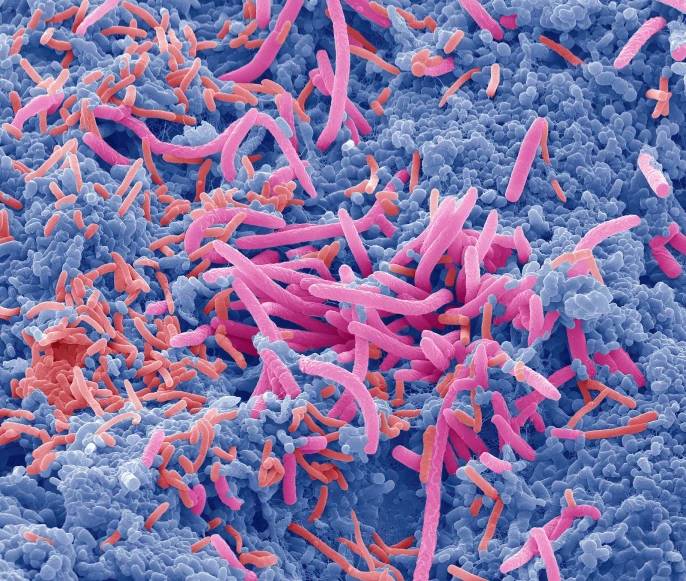
1. 4 Promotes mineral absorption
FOS is a water-soluble dietary fibre that is not digested or absorbed by the stomach or small intestine. However, it can form “FOS-mineral complexes” with minerals. In the large intestine, FOS is fermented to produce short-chain fatty acids such as butyric acid and lactic acid, which release minerals (including Ca2+, Mg2+, Fe2+ and Zn2+). It also produces acid-producing bacteria, which lowers the pH of the intestine and promotes the dissolution of minerals. The butyric acid produced can stimulate the growth of mucosal cells. The hydrogen ions released by the organic acids in cells can exchange with calcium ions, which promotes calcium absorption. In addition, organic acids can stimulate the proliferation of intestinal epithelial cells. The butyric acid produced can stimulate the growth of mucosal cells, increase the absorption area, and improve the intestinal mucosa's ability to absorb ions [19-20]. The latest results show that prebiotics can improve the absorption of bone minerals and bone health, mainly because they can change the composition of the intestinal flora, the production of short-chain fatty acids, change the intestinal pH, modify biomarkers, and regulate the immune system. The current scientific literature supports the consumption of prebiotics as a cost-effective and sustainable way to improve bone health/or fracture prevention [21].
1. 5 Improves lipid metabolism and lowers blood lipids and cholesterol
In vitro experiments have shown [22-24] that FOS can effectively lower the levels of free fatty acids, serum cholesterol and triglycerides in the body, and has a good effect on improving hypertension and cardiovascular disease caused by high blood lipids. The mechanism may include the fact that oligofructose can promote the formation of bile acids and cholesterol to form precipitates, which are excreted with the stool. Costa et al. [25] demonstrated that a diet containing FOS can prevent lipid disorders in the liver of insulin-resistant rats and reduce fatty acid synthase activity. In addition, FOS-rich diets in patients with hyperlipidemia have higher reductions in LDL cholesterol and fat degeneration. In addition, bifidobacteria themselves can also adsorb cholesterol and excrete it with the stool. In addition, short-chain fatty acids formed by the fermentation of oligofructose by intestinal flora can inhibit the activity of cholesterol synthase and reduce the intestinal absorption of cholesterol.
1. 6 Preventing tooth decay
The current causes of tooth decay include bacteria, oral environment, host (referring to parasites including parasites, viruses and other organisms that parasitize on it) and time. Streptococcus mutans is the main cause of tooth decay, as it breaks down carbohydrates to produce acid. Fructooligosaccharides cannot be used by Streptococcus mutans, thereby reducing the places in the mouth where microorganisms can deposit, produce acid and erode, and thus preventing tooth decay [26].
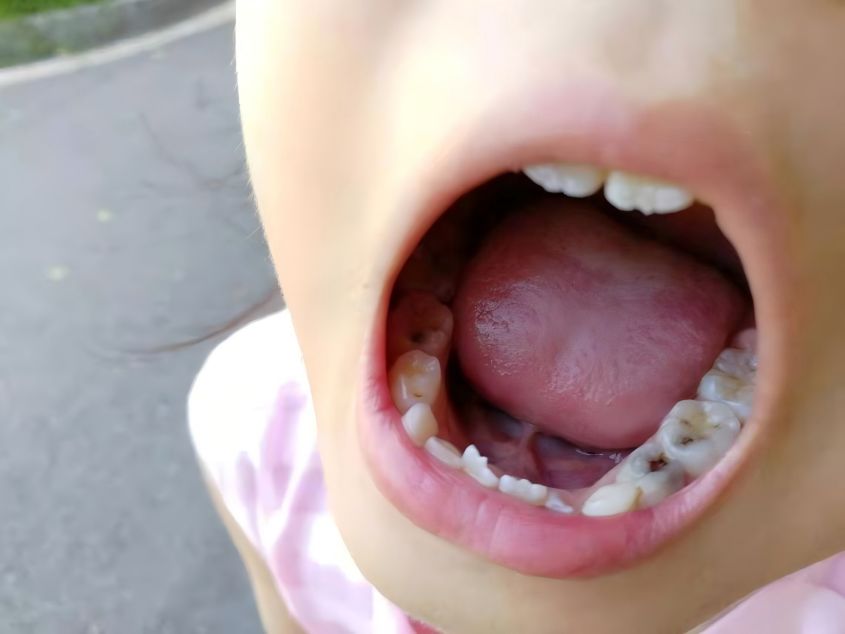
2 FOS application status
FOS is a high-quality water-soluble dietary fiber with low energy and low sweetness. It has been widely used as a food ingredient in dairy products, beverages, candy, biscuits, bread, jelly and other foods and functional foods at home and abroad [27]. FOS is known as the most promising new generation of additives – prebiotics – after the era of antibiotics. FOS not only improves the nutritional and health-promoting functions of foods, but also effectively extends the shelf life of yogurt, ice cream, baked goods shelf life. Due to its low calorie content, FOS does not cause obesity and does not raise blood sugar levels, making it an ideal new sweetener with health benefits. Adding the right amount of FOS powder to infant milk powder or other dairy products and oral solutions is beneficial for the proliferation of bifidobacteria, improving the intestinal flora and regulating the balance of the intestinal microflora, as well as boosting the immune system [28]. Adding FOS to drinking water can promote the rapid proliferation of bifidobacteria, inhibit the production of putrefactive bacteria such as Escherichia coli and Salmonella, reduce the production of toxic substances, improve the skin, and control blood sugar and blood lipid concentrations.

3 Prospects
FOS has a variety of biological activities, such as being an effective proliferation factor for bifidobacteria, a water-soluble dietary fibre that can maintain the balance of intestinal flora and improve the intestinal environment, lower blood lipids and improve lipid metabolism, boost immunity, prevent tooth decay and cavities, and reduce the risk of colon cancer. It is widely used at home and abroad. As the market develops, there is scope for further development of FOS products with high purity, good safety and high added value.
References
[1] Ding Changhe, Ma Kang, Zhang Hongbin, et al. Production and analysis of several major functional oligosaccharides in China [J]. Agro-Products Processing, 2014, 11 (6): 48-52.
[2] Liu Zongli, Li Kewen, Wang Jingbo, et al. Physicochemical properties, physiological effects and applications of fructooligosaccharides [J]. China Food Additives, 2016, (10): 211-214.
[3] Bi Yunfeng, Xu Linlin, Jiang Shan, et al. Application and research progress of oligosaccharides in functional foods [J]. Cereals, Oils and Foodstuffs, 2017, 30(1): 5-8.
[4] Liu Ruixue, Li Yongchao, Zhang Bo. Research progress on the balance of intestinal microecology and human health [J]. Food Industry Science and Technology, 2016, 37(6): 383-391.[5 ] Tang WH,Kitai T,Hazen SL,et al.Gut Microbiota in cardiovas- cular health and disease [J]. Circ Res,2017,120 ( 7 ) :1183-1196.
[6 ] Wang J,Tang H,Zhang C,et al.Modulation of gut microbiota during probiotic-mediated attenuation of metabolic syndrome in high fat diet-fed mice[J].ISME J,2015,9( 1) : 1-15.
[7 ] Frank DN,Robertson CE,Hamm CM,et al.Disease phenotype and genotype are associated with shifts in intestinal-associated microbiota in inflammatory bowel disease[J].Inflamm Bowel Dis,2011,17( 1) : 179-184.
[8 ] Cani PD,Bibiloni R , Kanuf C,et al.Changes in the gut microbiota control metabolic endotoxemia-induced inflammation in high-fat diet-induced obesity and diabetes in mice[J].Diabetes,2008,57 (6) : 1470-1481 .
[9 ] O' Callaghan A,van Sinderen D.Bifidobacteria and their role as members of the human gut microbiota[J].Front Microbiol,2016, 7:925-947.
[10] Chenoll E,Rivero M,Codoňe FM,et al.Complete genome sequence of bifidobacterium longum subsp.infantis Strain CECT 7210,a probiotic strain active against rotavirus infections[J]. Genome Announc,2015,3(2) : e00105-15.
[11] Koleva P,Ketabi A,Valcheva R , et al.Chemically defined diets alters the protective properties offructo-oligosaccharides in HLA- B27 transgenic rats[J].PloS One,2014,9( 11) : e111717 .
[12] Hoseinifar SH,Soleimani N,Ring E.Effects of dietary fructo- oligosaccharides supplementation on the growth performance, haematoimmunological parameters ,gut microbiota and stress resistance of common carp ( Cyprinus carpio) fry[J].Br J Nutr, 2014,112(8) : 1296-1302.
[13] Nakamura Y,Nosaka S,Suzuki M,et al.Dietary fructo oligosac- charides up-regulate immunoglobulin A response and poly meric immunoglobulin receptor expression in intestine of infant mice [J].Clin Exp Immunol,2004,137( 1) : 52-58.
[14] Tsuda M,Arakawa H,Ishi N,et al.Dietary frucoto-oligosaccha- rides attenuate early activation of CD4+ T cells which produce both Th1 and Th2 cytokines in the intestinal lymphoid tissues of a murine food allergy model[J].Int Arch Allergy Immunol,2017, 174(3-4) : 121-132.
[15] Meksawan K,Chaotrakul C,Leeaphorn N,et al.Effect of fruc- tooligosaccharide supplentation on constipation in elderly contin- ous ambulatory peritoneal dialysis patients[J].2016,36 ( 1 ) :60-66.
[16] Dirkjan S,Jan F,Rutger J,et al.Supplementation offructooligo- saccharides to suckling piglets affects intestinal microbiota coloni- zation and immune development[J].J Anim Sci,2018,96 (6 ) : 2139-2153.
[17] Shang Y,Kumar S,Thippareddi H,et al.Effect of dietary fructoo- ligosaccharide (FOS) suplementation on Ileal microbiota in broiler chickens[J].Poult Sci,2018,97( 10) : 3622-3634.
[18] Mao B,Gu J,Li D,et al.Effects of different doses offructooligo- saccharide ( FOS) on the composition of mice fecal microbiota, especially the bifidobacterium composition[J].Nutrients,2018, 10(8) : 1105-1117.
[19] Wang Jinhai, Feng Shan, Zhu Hongyang, et al. Research progress on the physiological functions and applications of oligofructose [J]. Strait Drugs, 2015, 27(7): 7-9.
[20] McCabe L ,Britton RA ,Parameswaran N. Britton ,narayanan parameswaran.Prebiotic and probiotic regulation of bone health : Role of the intestine and its microbiome[J].Curr Osteoporos Rep, 2015,13(6) : 363-371.
[21] Whisner CM,Castillo LF.Prebiotics,bone and mineral metabo- lism[J].Calcif Tissue Int,2018,102(4) :443-479.
[22]Liu Guohong, Ma Jiaojie, Wei Ying, et al. Discussion on the hypolipidemic effect and mechanism of oligofructose [J]. Food and Drugs, 2015, 17(1): 34-36.
[23] Yasmin A,Butt MS,van Baak M,et al.Supplementation of prebio- tics to whey-based beverage reduce the risk of hypercholesterolae- mia in rats[J].Inter Dairy J,2015,48 : 80-84.
[24] da SilvaMorita FS,Balbo SL,Mendes MC,et al.Short-chain fruc- tooligosaccharides do not alter glucose homeostasis but improve the lipid profile in obese rats[J].Acta Sci Health Sci,2015,37 (2) : 119-125.
[25] Costa GT,Abreu GC,Guimares AB,et al.Fructo-oligosaccha- rides effects on serum cholesterol levels.An overview[J].Acta Cir Bras,2015,30(5) : 366-370.
[26] Cao Min, Lei Guanghong, Mi Yunhong, et al. Research progress of low-molecular-weight fructose [J]. Light Industry Science and Technology, 2017, 2017(3): 19-21.
[27] Amrutha N,Hebbar HU,Prapulla SG,et al.Hebbar,effect of additives on quality of spray-dried fructooligosaccharide powder [J].Drying Technol,2014,32(9) : 1112-1118.
[28] Long Xiaolei, Li Zimin, Zhou Yuechan, et al. Effect of oral oligofructose on the intestinal flora of humans [J]. Applied Preventive Medicine, 2016, 22(3): 227-229.


 English
English French
French Spanish
Spanish Russian
Russian Korean
Korean Japanese
Japanese
